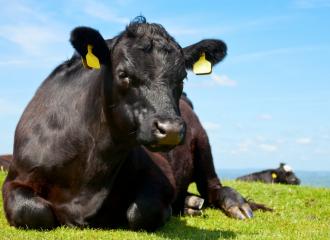 The number of meat herds is planned to increase in Tomsk region by 2025 eight times - up to 30 thousand heads. It is supposed that this will allow satisfying the region's needs for beef and supplying meat to federal processors, TASS was told in the department for social and economic development of the village of Tomsk region.
The number of meat herds is planned to increase in Tomsk region by 2025 eight times - up to 30 thousand heads. It is supposed that this will allow satisfying the region's needs for beef and supplying meat to federal processors, TASS was told in the department for social and economic development of the village of Tomsk region.
"The concept of accelerated development of beef cattle breeding in Tomsk region has been approved, and it assumes that by the year 2025 the region will be self-sufficient for beef - now this figure is 59%, and it is planned to sell livestock and meat to federal processors," said the Department representative. Now the uterine stock is 3.6 thousand cows, by 2025 it is planned to increase to 30 thousand heads. The total number of meat herds in the region currently stands at about 8,000 heads. It is also planned to increase the number of livestock due to 'surrogate motherhood', that is, using embryonic technologies to produce purebred beef cattle from existing dairy cows.
In 2017, at least five new farms will be established in the region, and in 2018 more than 30. By 2025, more than 300 meat farms will operate in the region. The territory will be divided into several zones, each of which will have a cooperation of meat farms. It is assumed that the number of farms that are not part of the cooperatives will be minimal, 'since this is unprofitable.' All cooperatives will be united by a central integrator. In particular, he will seek federal partners and be responsible for large contracts for agricultural producers.
According to the department, at present several federal processors have already announced readiness to work with agricultural producers in Tomsk region, including Auchan and Miratorg.
Head of Omsky Biocluster's Genetics and Breeding of Cattle Practice, Director General of SIBAGROCOMPLEX Group Anatoly Shulakov:
"We are actively working in Tomsk region, the task of regional authorities is ambitious. The competent, professional approach to the implementation of the concept of development of meat cattle, combined with the resources that have been identified, make the task achievable by 100%. The region has chosen the right vector of movement: farms in the image of the cluster and the orientation towards professionals who have a 'success story'. The presence of retail operators in the cooperation scheme makes it logically complete. A week ago, I and my colleagues from Tomsk and Novosibirsk discussed this topic in Omsk and agreed to combine efforts to improve the efficiency of livestock production (see - https://en.agrobiocluster.ru/news/siberian-regions-discussed-actual-issues-of-animal-husbandry)."
Information: Omsky Biocluster's Genetics and Breeding of Cattle Practice is an expert site on the audit of feeding and care of the herd, selection of genetics and implementation of cattle breeding. Experts of the Practice carry out practical activities to improve the efficiency of the functioning of farms and increase the financial result, first of all, from the available resources. More information about the Practice: https://agrobiocluster.ru/praktika_genetika.

